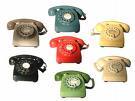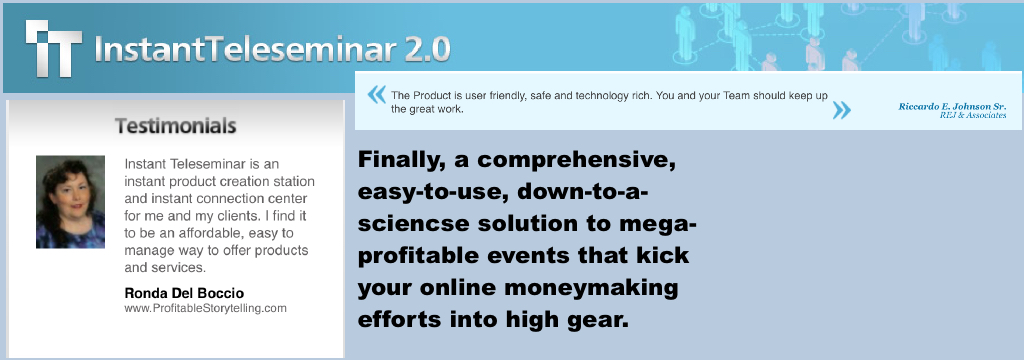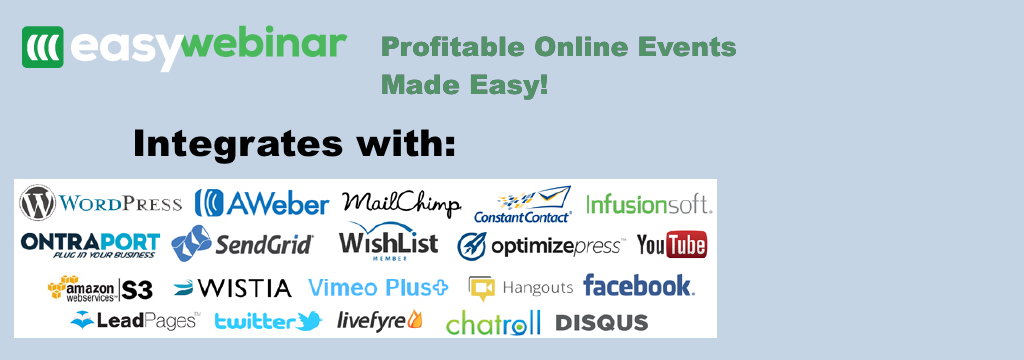This article discusses some really great tips on how to hold a meeting by phone. Even though this article is based on the concept of holding a meeting, many of these 18 tips can also be exported when it comes to holding a teleseminar, or for that matter a webinar as well. Most of the tips are common sense in terms of keeping the flow of the meeting going and keeping the participants interested, like having your agenda set before hand and introducing the speakers at the beginning of the event. Read on for the rest of these tips on how to organize a teleconference.
Even a well-planned teleconference can go poorly. Some people treat any meeting
as a casual social activity instead of as a serious business project. And a
teleconference brings special challenges because people attend them in the privacy
of their office without being able to see or be seen by the other participants.
Use these techniques to hold a more effective meeting by phone.
1) Begin with a quick round of self introductions so that everyone can find out who
is present and hear everyone else’s voice.
2) Enforce the rule of “one speaker at a time.” Multiple conversations ruin a
teleconference.
3) Insist that people announce when they join or leave the conference.
4) If people must leave during the meeting, gain closure on any issues that they
participated in before they leave. For example, “Pat agreed to prepare a cost
estimate by next Monday. Is that correct, Pat?” Make adjustments in the agenda (if
appropriate) based on the remaining participants.
5) Keep everyone focused on the issue being discussed. If someone introduces an
idea that seems unrelated, say, “That sounds interesting. How does that relate to
the issue?”
6) Record the conference. First, this will help you prepare minutes. And second, it
encourages people to make meaningful comments. Of course, you should announce
that you are recording the meeting before you start.
7) State your name each time that you speak. This helps everyone know that you are
speaking.
8) If you are speaking on your desk phone, use the handset instead of the
speakerphone. A speakerphone, while useful, distorts your voice, picks up
background sounds (like office equipment), and makes a poor impression on the
listener. If you must have both hands free while you talk, obtain a headset. Note: It
is more courteous to speak to people through the handset (instead of the
speakerphone) on any phone call.
9) Speak clearly to make sure that you are understood. Take the extra effort to
enunciate carefully and speak slowly. Of course, you want to sound natural.
10) When stating numbers, write them out while you speak because that defines the
rate at which everyone else is capturing them.
11) Then ask the receiving party to confirm numbers (or other critical data) by
repeating them. Although this may seem awkward, it prevents misunderstandings.
Better yet, send written copies of all critical information.
12) When possible, plan your statements by jotting down an outline of your key
ideas before speaking. This contributes to a more efficient meeting, helps you
appear more thoughtful, and avoids the embarrassment of making a verbal gaff.
13) Use your best, most focused listening skills. Pay addition to content, as well as
inflections, voice tone, word selection, emphasis, assumed intentions, and your
intuition.
14) Avoid shuffling papers, moving about, or tapping objects. Everyone else will
hear the noise. It’s distracting and irritating.
15) Reinforce accomplishments by distributing copies of key ideas and agreements
during the meeting. You can send these, for example, by e-mail or fax.
16) Stay fully present during the meeting. Avoid working on other tasks, such as
reading mail or filing papers. These reduce your ability to participate intelligently in
the meeting.
17) Avoid using the mute button to talk to someone in your office during the
audioconference. First, this shows discourtesy to both parties – the person in your
office and the people in the teleconference. It also takes your attention away from
the meeting, causing you to miss important information. And be warned that people
have found themselves in serious trouble when the mute button failed.
18) Prepare minutes soon after the meeting. Send a draft to key participants to
confirm that your notes accurately describe the results of the meeting. Minutes
should be released within a day or two after the meeting in order to be useful. After
that, they become stale.
Properly conducted, teleconferences contribute to the efficiency of effective
business. Use the above techniques to make sure your meetings do that.
– – – – –
IAF Certified Professional Facilitator and author Steve Kaye helps groups of people hold effective meetings. His innovative workshops have informed and inspired people nationwide. His facilitation produces results that people will support. And his books show how to hold effective meetings. Sign up for his free newsletter at http://www.stevekaye.com. Call 714-528-1300 or visit his web site for over 100 pages of valuable ideas.
For more on How To Organize a Teleconference, See Also:
1. Decide on your call topic. Before the call set your purpose and goal. Do you want to promote your product or business? Do you want to promote a guest and earn money through affiliate commissions. Know how you will benefit from this call before going any further with your planning.
2. Set up your sign up page. It’s a good idea to have a dedicated page where your teleseminar attendees can sign up. You’ll want to include the following on your teleseminar signup page… click title for more
Webinar and Teleseminar Resources
Create Residual Revenue From Your Webinars Tags: how to organize a teleconference, Teleconference, teleconference equipment, teleconference speakers Posted by





